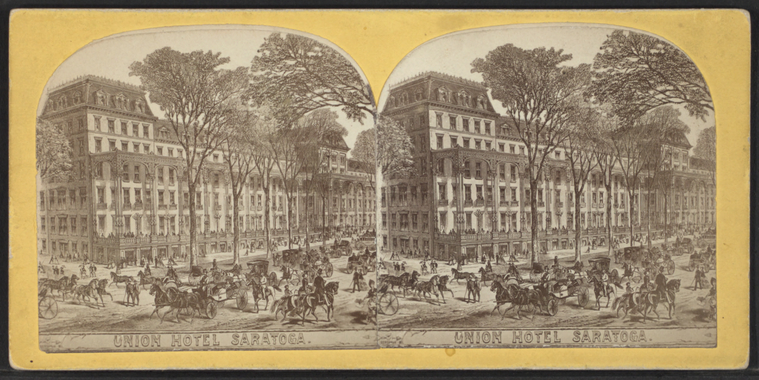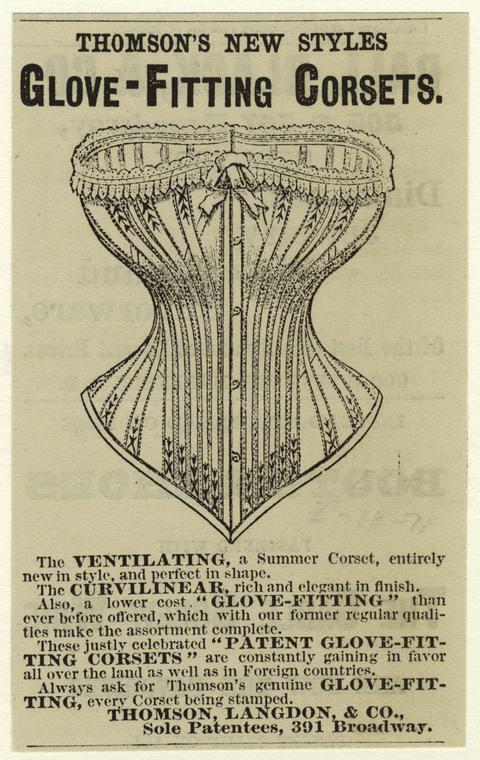Actual Sewing!
So, I spent the past week engaged in making a Regency day dress for myself. Fastest thing I've ever fully put together! Albany's TulipFest is not really intended as a costumed event, but the Empire State Costumers (join us!) can turn any party into a dress-up party.
To start, I used the pattern I took from an evening dress in the Albany Institute's collection (combined with some Janet Arnold sleeves) and striped cotton from Renaissance Fabrics. As usual with extant pieces, I am not quite as dainty, so I knew I would have to enlarge it. Unfortunately, I chose to widen it from the center front, which made the straps set at the wrong angle and there were just all sorts of issues. Think I'll definitely take another go at it, raising the waistline and fitting it better, but for now I need to move on.
Next up: I'll be doing a talk at Clermont on women's fashion in the 1920s in June, and I would really like to be dressed up for that. My dilemma is that I can't tell if it'd be better to do a very plain ca. 1923 day dress, long and straight, with a pattern in my size - or to shatter expectations with what fashion/pattern magazines would refer to as "an afternoon dress with a bouffant skirt". The bouffant dress would probably be more flattering to me than the straight one, but I'm concerned that it would go beyond "whoa, I didn't think the 1920s included things like that!" to "why is she wearing a '50s cocktail dress?" to an audience. Thoughts?
After that on the list: this year is the Saratoga Racetrack's 150th anniversary. There are several military reenactment events on the official calendar, and maybe I'll visit them, but I think it would be lovely to
have an 1873 picnic at some point. I do have a couple of 1860s patterns of my own, but nothing this late, so I'll likely use the ca. 1871 Janet Arnold pattern with the day bodice (probably including the neckline fill-in because I always seem to have a very hard time keeping chemises from showing there). I'd love to make it out of lawn, along these lines.
Of course, what does this mean? NEW UNDERGARMENTS NEEDED. I am a big fan of corsetry for its controversy and aesthetic appeal, but I have to admit that I really, really dislike sewing it. Fitting is not my specialty, and in a corset the fit is the most important aspect. I also have a bad track record for finishing corsets, although in this case the lack of straps and gussets means there is a better chance that I could Do This and move on to the bustle.
(I'm the second from the right.)
To start, I used the pattern I took from an evening dress in the Albany Institute's collection (combined with some Janet Arnold sleeves) and striped cotton from Renaissance Fabrics. As usual with extant pieces, I am not quite as dainty, so I knew I would have to enlarge it. Unfortunately, I chose to widen it from the center front, which made the straps set at the wrong angle and there were just all sorts of issues. Think I'll definitely take another go at it, raising the waistline and fitting it better, but for now I need to move on.
l'original
Next up: I'll be doing a talk at Clermont on women's fashion in the 1920s in June, and I would really like to be dressed up for that. My dilemma is that I can't tell if it'd be better to do a very plain ca. 1923 day dress, long and straight, with a pattern in my size - or to shatter expectations with what fashion/pattern magazines would refer to as "an afternoon dress with a bouffant skirt". The bouffant dress would probably be more flattering to me than the straight one, but I'm concerned that it would go beyond "whoa, I didn't think the 1920s included things like that!" to "why is she wearing a '50s cocktail dress?" to an audience. Thoughts?
Union Hotel stereograph, ca. 1875; NYPL MFY Dennis Coll 91-F149 g91f149_025f
After that on the list: this year is the Saratoga Racetrack's 150th anniversary. There are several military reenactment events on the official calendar, and maybe I'll visit them, but I think it would be lovely to
have an 1873 picnic at some point. I do have a couple of 1860s patterns of my own, but nothing this late, so I'll likely use the ca. 1871 Janet Arnold pattern with the day bodice (probably including the neckline fill-in because I always seem to have a very hard time keeping chemises from showing there). I'd love to make it out of lawn, along these lines.
Advertisement from Every Saturday, March 18, 1871; NYPL PC COSTU-Cor 818149
Of course, what does this mean? NEW UNDERGARMENTS NEEDED. I am a big fan of corsetry for its controversy and aesthetic appeal, but I have to admit that I really, really dislike sewing it. Fitting is not my specialty, and in a corset the fit is the most important aspect. I also have a bad track record for finishing corsets, although in this case the lack of straps and gussets means there is a better chance that I could Do This and move on to the bustle.







Hey, it turned out all right after all! ;)
ReplyDeleteA hint on the chemise peekage: Unbutton some buttons on the placket, tuck in the corners, and voila! a chemise with an extra-low/wide neckline.
(It usually does. I am just full of histrionics!)
DeleteThat is a good tip I'm going to have to remember, but so far my problems have been with chemises (or bodiced petticoats, in this case) that don't have any fastenings at all. :(
Good morning, Cassidy!
ReplyDeleteAbout the 1920s talk: perfect timing, given all the Gatsby hoopla...I'd go for the dress that suits you, so you can wear it again with happiness! Lanvin was known for the robe de style that you're thinking about, and the one you chose is handsome. You can certainly use the dress as a way to show people just how varied the styles of the 20s were, and since the dress still probably has a bit of a dropped waist, and certainly a different bodice fit, it won't look fifties when worn, especially if your hair and shoes coordinate well.
The 1872 dress is a duck and should be much fun to wear!! By the way, the early 1870s still had some width and fluffiness in the front. The lobster tail bustle won't help with breadth or fluff across the front. Lawn is so limp that you'll need something to assist, and I am not entirely sure that a heavily starched and flounced petticoat or two will be enough to give you the silhouette that your example dress has. Lots of early bustles had a full hoop at the base to help. Just thoughts from a bustle wearer :}
Very best,
Natalie
Ha - to be honest, it's completely intentional timing! I think I am going to go with the one that (at least slightly) suits me. To be honest, I'm trying to get away from the "robe de style" designation unless there are actual panniers involved, as my experience is that it's not as common for dresses that just have full skirts ... although the period sources are, as usual, conflicting. It seems like in some cases the only-if-there-are-panniers definition is it, in others it's actually what people were calling full-skirted dresses of the latter half of the 1910s (and people are saying that these full-skirted dresses in the '20s are a continuation or imitation of the earlier ones). I'm glad to have a second opinion confirming my own that it'd be okay to go with that!
DeleteI'm not planning to follow the example 1870s dress too closely - I just didn't want to spend too much time looking for a painting that came closer. You're right, the earlier silhouette is bulkier, but there seems to be some leeway when it comes to activewear. Since this will, with luck, be worn for a picnic in Congress Park or something like that, I'm letting it count. But thank you for thinking about the issue!